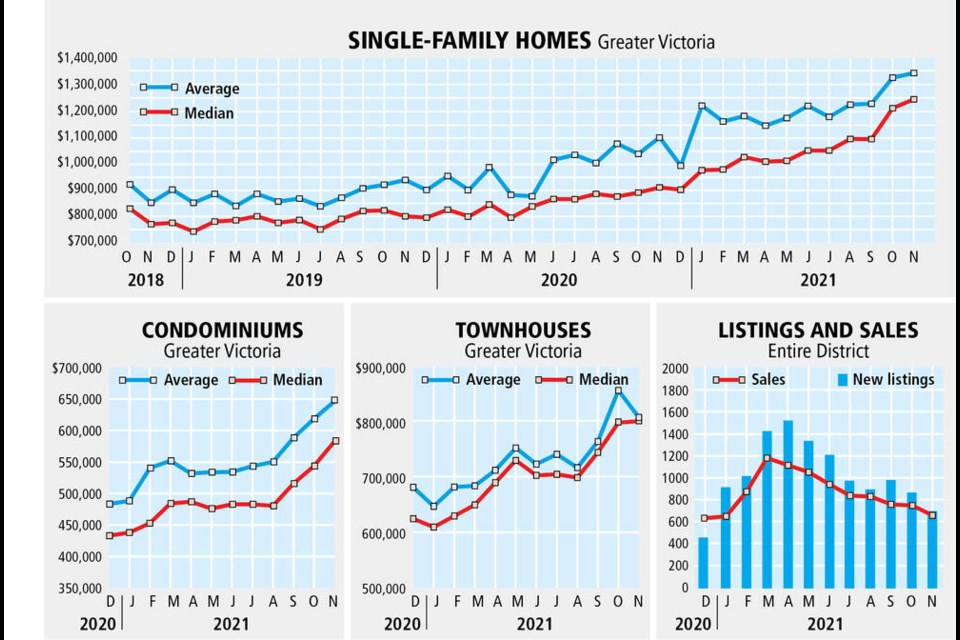Victoria’s real estate market doesn’t seem to care that there’s very little available to sell.
Despite inventory dipping below the 900-property mark at the end of last month, the region recorded 653 sales in November, according to numbers released Wednesday by the Victoria Real Estate Board.
That’s the third highest number of sales in November in the last 15 years — last year at the same time there were 795 sales, and November 2017 saw 671.
“Given the year we’ve had, I’m not surprised at all,” said board president David Langlois.
Langlois said while inventory has continued to drop, demand remains strong, with new buyers entering the fray every month, including a few more from outside the province.
While it wouldn’t be surprising if the market seized up due to the lack of inventory, with would-be sellers afraid to list properties for fear they might not be able to find another suitable property to buy, homes continue to sell, he said.
“It’s an interesting and complex market — it’s definitely tough to navigate,” Langlois said. “But the buyers are there, the demand is certainly there and if we’d had more listings, we would have seen more sales.”
There were 887 active listing available at the end of November, compared with 1,813 at the end of November 2020.
The result was another jump in sales prices.
The benchmark value for a single-family home in Greater Victoria jumped to $1.4 million last month, from $1.02 million in October and $821,200 in November last year.
The benchmark value for a condominium in the region jumped to $555,400 last month compared with $478,200 the year previous, while the benchmark price of a townhome last month was $750,200, up from $603,200 in November 2020.
Langlois said high demand amid limited supply spurs competition and puts upward pressure on pricing.
The board continues to call for measures to increase housing supply at all levels.
That’s the only way to ease pressure on the housing market, said Langlois. He said demand-side measures such as the province’s recent plan to introduce a “cooling off” period for resale homes only add uncertainty to the marketplace and fail to address housing supply and attainability.
aduffy@timescolonist.com



